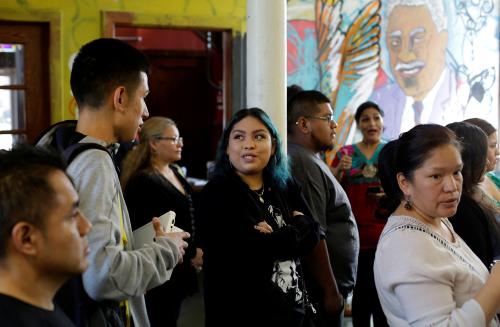The urban world is facing a double demographic hit on economic growth. Between 2000 and 2012, an expanding population drove nearly 60 percent of economic growth in the world’s large cities, but those days of easy urban growth are over. First, global population growth is slowing due to declining fertility rates and an aging population. Second, the pace of rural-to-urban migration is waning in many regions.
A new report from the McKinsey Global Institute (MGI), Urban world: Meeting the demographic challenge in cities, shows the impact already. Between 2000 and 2015, population declined in 6 percent of the world’s largest cities—most of them in developed economies. In the next decade, we expect 17 percent of large cities across developed regions to see their populations decline.
MGI compared three developed countries and regions—Japan, the United States, and Western Europe—to understand the implications of this demographic double hit. Cities’ growth prospects will reflect very different demographic footprints and dynamics shaped by local birth rates and death rates, net domestic migration, and net international migration. This exercise reveals that the United States is arguably in a better demographic position than the other regions.
Japan’s challenges are the most acute of the three regions. More than one-quarter of the country’s population is over 65 years of age, compared with 20 percent in Western Europe and about 15 percent in the United States. Japan’s urban population growth was only 0.6 percent between 2010 and 2015, and is expected to be flat over the next decade. Japan’s urban landscape is relatively static with little migration between cities and very limited immigration. It is a nation that is “aging in place.” Tokyo, Nagoya, and a few other regional cities continue to attract people from other cities, but nearly 40 percent of the nation’s cities lost population between 2012 and 2015 (Figure 1). Cities like Akita, Aomori, and Hakodate, for instance, could experience a further 50–60 percent decline in the number of women of childbearing age between 2010 and 2040. In such cities, the challenge of providing health and elderly care services is rising.

Aging in Western Europe is not as advanced as in Japan. Western Europe’s cities will continue to grow by 0.5 percent annually between 2015 and 2025, but aging is uneven. Thirty-three percent of Western Europe’s cities experienced population decline from 2012 to 2013, many of them in Germany and Mediterranean countries (Exhibit 2). Yet many European cities benefit from higher mobility among cities than in Japan, and from net international immigration of 2.3 immigrants per 1,000 people compared with Japan’s 0.6. Some capital cities like Berlin, London, Oslo, Paris, and Stockholm are still attracting new citizens and their populations are growing.

While the United States is also aging, urban America benefits from higher fertility and greater migration and immigration than either Japan or Western Europe. Urban population growth is set to decline slightly to 1.0 percent per year between 2015 and 2025, from 1.3 percent in the previous decade. Furthermore, the diversity of American cities means that the United States is better placed to cope with the demography challenge than Japan or Western Europe (Figure 3). U.S. cities vary in their demographic profiles and growth strategies. For fast-growing cities like Atlanta, Dallas, Houston, and Phoenix, international migrants have contributed up to one-quarter of their rapid growth. The coastal megacities of New York and Los Angeles are attracting international migrants but experiencing net outward domestic migration; for them, affordability is the challenge to keeping and attracting people. Many niche cities grow by catering to particular demographic groups such as students or retirees, or offering strong art and culture scenes. Some cities’ populations are still expanding because they are home to large numbers of first- and second-generation immigrant households, whose fertility rates are higher than average: think El Paso in Texas and Bakersfield in California. Slowing cities—among them post-industrial urban centers—face the choice between reinventing themselves through new industries and services, or adapting to smaller populations to ensure a high quality of life for those who remain.

How cities cope with demographic change matters, not only for their economies but also for their politics and societies. Pessimism and optimism among voters—and the political choices those voters subsequently make—appear, more than ever, to depend on where they live. In the U.S. presidential election, Clinton voters were heavily metropolitan (and from areas with high economic output) while Trump voters tended to be in (lower-output) suburban and rural areas, as shown by Mark Muro and Sifan Liu. As the demographics of cities—and the strategies they deploy to cope with change—diverge, so too do perceptions of economic opportunity. The divide between rural and urban communities is already evident in the election results. As demographics create an ever-more-differentiated urban landscape, the divide between citizens of different cities is set to widen too.
Urban world: Meeting the demographic challenge in cities was published in October 2016 and is available for download at http://www.mckinsey.com/global-themes/urbanization/urban-world-meeting-the-demographic-challenge-in-cities
The Brookings Institution is committed to quality, independence, and impact.
We are supported by a diverse array of funders. In line with our values and policies, each Brookings publication represents the sole views of its author(s).






Commentary
Aging and urban divergence
January 23, 2017